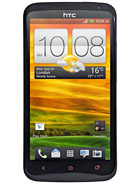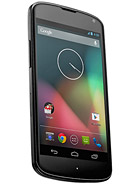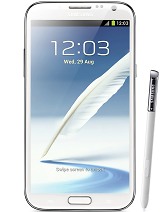HTC DROID DNA review: Champion genes
Champion genes
Final words
HTC has ticked all the right boxes with the DROID DNA, creating one of the most attractive offerings currently available on the US market. The combination of the handset's 5" 1080p display and Qualcomm's quad-core Snapdragon S4 Pro not only guarantees bragging rights, but also really takes the overall user experience to a whole new level.
Android 4.1 Jelly Bean with HTC's latest Sense UI is a great combination as well, providing a great blend of functionality and eye candy. The DROID DNA's camera performance was good if unspectacular, while its build quality is great and should please all but the most demanding users out there.
Much to our surprise, battery life came out pretty good - the powerful chipset and huge high-res screen turning out pretty efficient. We must warn you, though, once you switch to LTE only, making it through a full day becomes a lot more difficult.
What came the closest to spoiling the deal for us were the 11GB of user-accessible non-expandable internal storage. The device is a multimedia powerhouse and can show 1080p videos in their native resolution, but it can only fit a couple of movies at a time.
The top shelf games for Android easily top 1GB these days and some even exceed 2GB - you can't have too many of those at the same time and given that there's no easy way to retain your saved games you can't simply install just the needed ones every time. What's worse - there's no way to get a version with more storage even if you are willing to pay for it.
We guess HTC did this under pressure from Verizon, who wanted to be sure that you will be using the only possible workaround - cloud storage for your multimedia content. And while the carrier will gladly sell you its most expensive LTE plans, even the 4G network isn't always fast enough for those high-quality videos.
Software is another area of the user experience, damaged by the carrier. Once again, we encountered a massive amount of preloaded, non-removable apps from Verizon Wireless. In fact those same apps help reduce the HTC DROID DNA already limited available storage to the 11GB you get in the end.
Verizon Wireless has priced the HTC DROID DNA at the highly acceptable $199.99 with a two-year contract. This amount of money will get you arguably the best Android hardware in the United States at the moment, albeit with the above-listed limitation. Should you decide to shop around, here are some more options worth considering.
If you like the Jelly Bean/Sense UI combo, you might have a look at the LTE-touting HTC One X+ for AT&T. Costing $199.99, that one comes with 64GB of onboard storage, so it doesn't face the shortages issue of the DROID DNA. The One X+ comes with a chipset of a previous generation though - NVIDIA Tegra 3, and while its screen is great, it doesn't come anywhere near the DROID DNA stunning display.
The LG Optimus G for AT&T and Sprint Wireless is another option worth considering. The Korean offerings sport the same chipset as the DROID DNA, while offering more built-in memory. Keep in mind however, that you will need to settle for a lesser display the older, 4.0, Android version. The Optimus G is also priced at $199.99.
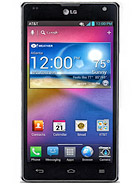
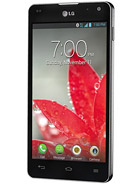
LG Optimus G E970 • LG Optimus G LS970
The Google Nexus 4 is another Qualcomm Snapdragon S4 Pro packing alternative to the HTC DROID DNA. The LG-made device however has the same flaws as the DROD - its battery is non-removable and the user-accessible part of its built-in, non-expandable memory is only slightly larger than that of the HTC.
What you get in return though is the cleaner look of stock Android, a newer Jelly Bean version out of the box and guaranteed quick updates whenever a new version of the Google OS comes around. The Nexus 4 costs $199.99 with a two-year commitment to T-Mobile, which doesn't sound like a great bargain, considering that you will be giving up on a 1080p screen.
However, if you don't feel like signing a contract, things look dramatically different - the 16GB version of the Nexus 4 costs just $349 SIM-free, which is a lot lower than its competitors.
Finally, power users should probably check out the Samsung Galaxy Note II. Yes, its Super AMOLED screen is nowhere near as sharp as the one found in the DROID DNA, but with 3100mAh battery, the microSD card slot, and the S Pen, make the Samsung offering a real productivity champion. That one comes with an even larger screen though and is unlikely to fit in every pocket. Plus its $100 more expensive than the DROID DNA.
The HTC DROID DNA is the perfect smartphone for users who are willing to work around its memory limitations. The reward you will be getting is quite substantial - they will enjoy the best mobile display and most powerful silicon at the moment, packed into a good looking body.
Reader comments
- AnonD-129912
- 28 Mar 2013
- 4tJ
I do use it every day 4 hours of pure radio streaming over 4G LTE and using bluetooth, works fine whole day, if I don't use streaming radio, I have half of the battery at night... Same things with Galaxy NOTE 2 which has much stronger battery, and ye...
- AnonD-129912
- 28 Mar 2013
- 4tJ
I like how do you say "ONLY 11 GB" couple of times so people can remember forever, ha ha, only 11 GB for your precious life and after that you're dead, show stops, world ends, unless you buy Apple 64 GB life is shit... Poor HTC DNA you woul...
- Jake
- 03 Feb 2013
- D96
man love HTC so much, but this nom expandable memory thing has got to stop
